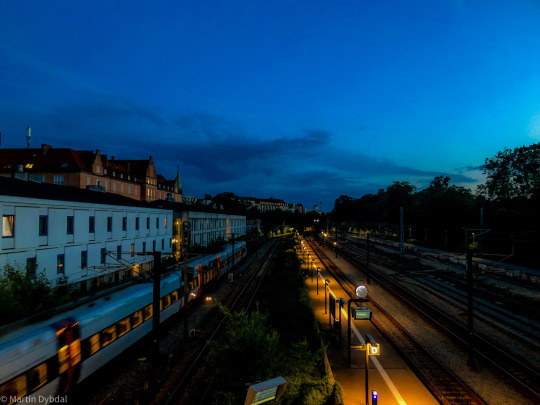#Østerport
Photo
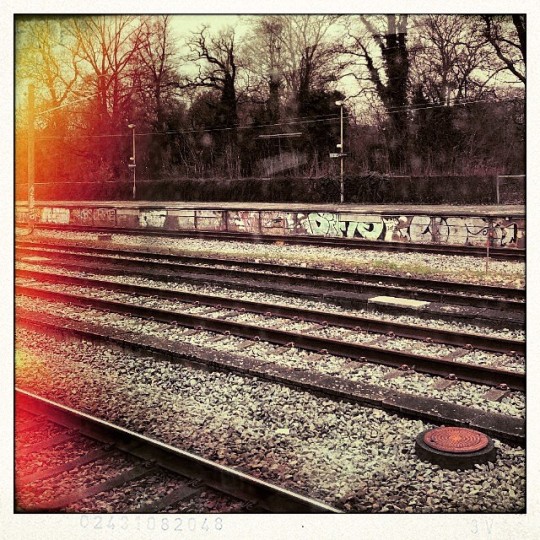
#østerport #østerbro #kopenhagen #bahnhof #winter #winter2023 #ontheroad #travelling (hier: Østerbro) https://www.instagram.com/p/Co3Bdrmt6q8/?igshid=NGJjMDIxMWI=
0 notes
Text
Sunday 10 November 2002 - crossing the Øresund to Sweden - a SE pölse is also a DK pølse - Little Mermaid statue is actually little
10 November 2002
EN Hi everyone. Twenty years ago today, I visited Sweden for the first time. Then I also went back to Copenhagen to see the Little Mermaid statue near the Osterport S-Tog rail station. It was at 4 PM just after the sun had set. Then it was time to enjoy some Carlsberg beer.
DE Hallo allerseits. Heute vor 20 Jahren war ich zum ersten Mal in Schweden. Dann ging ich auch zurück nach Kopenhagen, um die Statue der kleinen Meerjungfrau in der Nähe des S-Tog-Bahnhofs Østerport zu sehen. Es war um 16 Uhr, kurz nachdem die Sonne untergegangen war. Dann war es Zeit, ein Carlsberg-Bier zu genießen.
DK Hej allesammen. For tyve år siden i dag besøgte jeg Sverige for første gang. Så tog jeg også tilbage til København for at se Den Lille Havfrue-statuen ved Østerport S-Tog banegården. Det var klokken 16 lige efter solen var gået ned. Så var det tid til at nyde lidt Carlsberg-øl.
SE Hej allihopa. För tjugo år sedan idag besökte jag Sverige för första gången. Sedan åkte jag också tillbaka till Köpenhamn för att se den lilla sjöjungfrun nära järnvägsstationen Østerport S-Tog. Det var vid 16.00 precis efter att solen hade gått ner. Sedan var det dags att njuta av lite Carlsberg-öl.
FR Salut tout le monde. Il y a vingt ans aujourd'hui, je visitais la Suède pour la première fois. Ensuite, je suis également retourné à Copenhague pour voir la statue de la Petite Sirène près de la gare Østerport S-Tog. C'était à 16 heures juste après le coucher du soleil. Ensuite, il était temps de déguster une bière Carlsberg.
Guten Morgen! Good morning! God morgen! God morgon! (Editor's note: although in Swedish "morgon" is pronounced almost like "moron", the meanings are very different). Sunday the 10th November 2002 would be the day that I would visit Sweden for the first time. In July and August 1990, I had already visited Helsinki, Finland, as I was on a youth tour group in the then-USSR. I did not spend much time in Helsinki, maybe three days in total. This time I would be on my own, and it would be at my own pace.
I woke up about 6 AM. It was still very dark. Breakfast would not be served until 7 AM at the hostel. I did not know the schedule for the trains to Malmö, so I planned to leave about 8 AM, walk to the Bella Center metro station, take the M1 to Ørestad and transfer to the local train to Malmö Central. I took a shower, then went to the breakfast room. I think I had to pay around 70 Kroner for breakfast. The breakfast was very good, it even had a cheese slicer that I could slice cheese - if I remember, it was havarti, similar in appearance to Swiss - by turning a crank. There was a good selection of rye crackers to put on cheese. Also there was a good selection of yogurts. Also there were hard boiled eggs, cold cuts, and coffee and orange juice.
After breakfast, I walked to Bella Center metro station. The trains were running on schedule. I took the M1 south just to Ørestad and transferred to the DSB local train to Malmö C. The train that arrived looked similar to the IC3 that I rode, but it was an electric train. I had a seat in the second class, as my ticket was for that class, between Kastrup Airport and Malmö, the multi-day pass was for the entire Copenhagen region. The train went underground for two stations, namely Tårnby and the airport. It stayed underground for a while until five minutes later when it emerged as crossing the Øresund. About 9 AM, the train crossed the border between Denmark and Sweden. There were no passport checks on the train at all. The train made a stop at Malmö Lernacken. About 9:20 AM, the train ended at Malmö Central, at the then-head station. The train passed by an Ikea store, before going north and west to the central station. The station has since built an underground through station.
When I arrived in Malmö, I wanted to see the Malmöhus Slott. It was a castle close to the rail station. I had to walk along the Neptunigatan, then Gibraltargatan, and Malmöhusvägen. Along the way I found a funny bicycle crossing sign, which was a cyclist with a big joint in his mouth, probably something he (discreetly) bought in Christiania. I went back to the station to find a bus to downtown. I passed by the "Knotted Gun" memorial to nonviolence. The time would have been 10:15 AM or so. I boarded a bus for downtown at Malmö C, but they did not have a day pass available, so I took a single journey to about the Rörsjökanalen. I noticed the Jensens Bøfhus, along Södra Förstadsgatan, which was a steakhouse. It had a big herefordshire bull on its sign. About Föreningsgatan is the central business district in Malmö. It is nice to walk along on a Sunday morning, and also to do some window shopping. H&M is based in Sweden, and in Malmö, the stores would open about 12 PM. Until then, there were a few statues to take note of in the CBD. About 12 PM there was a CD shop that opened, and I went inside to look at some Swedish music. I saw a few CDs by Blacknuss, and one by Meja who did "All about the money" and "Private Emotion" with Ricky Martin a few years earlier. I thought about buying the CDs but I saw the prices, about US $ 30 for an average CD. Seemed a bit too much.
In Sweden, the Krona is used, as opposed to the Euro. The Krona is about the same exchange rate as the Danish Krone. In 2002, the 50 öre coin was used, but this has since gone out of use. The 20 Krona banknote is quite common, worth around US $3.
I walked around Malmö a bit, had maybe a pölse or two, and about 2:30 PM I decided to return to Copenhagen. The Swedish name for Copenhagen was Köpenhamn, pronounced as "Schöpenhamn". The Swedish letter K has an interesting consonant property, it tends to be pronounced as "Sh". Also, Hammarskjöld is pronounced in German as "Hammarchöld". I wished that I could have spent more time in Malmö.
I boarded the train for Copenhagen about 2:45 PM. It would not arrive in Copenhagen until about 3:30 PM about the time that the sun would set. At København H, I transferred from the train to an S-Tog, and I rode it until Østerport. Then I walked along the northwest side of the Kastellet fortification just east of Østerport station, then southeast at Langelinie, and was able to find the Den Lille Havfrue statue. It is not very large, it is maybe a meter high, as the Havfrue is sitting on a rock. As the sun had already set, I was able to take a flash photo, and it looks like it is shiny bronze with a darkening background. It would have been 4:30 PM when I took the photo.
I walked back to Østerport, took the S-Tog back to København H, and double checked the time of departure, which would be 9:30 AM to Hamburg Hbf. I would have about a seven hour layover in Hamburg anyway, until the train to Zürich would depart. I was hungry and wanted to find some place to eat. Somehow I found a pizza place that had a buffet. Their featured beer was Carlsberg "vøres øl".
After supper, I walked around the Radhuset area and caught the metro back to the hostel at Christianshavn. I went back to the hostel and went to sleep.
Please join me tomorrow, when I take the ride from Copenhagen, to Hamburg, then to Zürich, via Bremen and Baden AG.
Good night! Gute Nacht! Godnat! Godnatt!
#Copenhagen#Ørestad#Øresund#Sweden#Malmö#kronor#IKEA#Malmöhus Slutt#Knotted Gun#Non Violence#Rörsjökanalen#Blacknuss#Meja#Köpenhamn#København#pölse#pølse#Den Lille Havfrue#Little Mermaid#Østerport
0 notes
Text
i would buy a new mouse right now because i do technically have the money but i want to buy myself a little treat while i’m out later this week
#i have the dentist this week and then the day after or technically starting that same night i'm gonna try to go to the peaches concert#it's a lot of fuckin effort for like half an hour of music if i'm reading right#but like it'd probably be good for me to get out without my family#once again if you are going to the peaches concert by the østerport station lmk and we can meet up :3c
0 notes
Text
“Toward evening, he goes home, and his gait is as steady as a postman’s. On the way, he thinks that his wife surely will have a special hot meal for him when he comes home — for example, roast lamb’s head with vegetables. If he meets a kindred soul, he would go on talking all the way to Østerport about this delicacy with a passion befitting a restaurant operator. It so happens that he does not have four shillings to his name, and yet he firmly believes that his wife has this delectable meal waiting for him. If she has, to see him eat would be the envy of the elite and an inspiration to the common man, for his appetite is keener than Esau’s. His wife does not have it — curiously enough, he is just the same” (39f.).
Once again we can see that Kierkegaard is not interested in a stoic indifference, considering that his religious man sees the beauty of the world in its full intensity. What we have here is rather an idea of self-sufficiency that rests on a fundamental faith, a faith not in the world, which remains uncertain and unsteady forever, but in oneself, in the paradoxical possession of one’s own soul; and this trust is a never-ending source of joy. This fundamental task of becoming a self — which for Kierkegaard coincides with the true possession of a soul — cannot be a question of ability or of chance.
Timofei Gerber 2017
1 note
·
View note
Text
Calling all Copenhagen cyclists this morning – it's mighty slick out there!
In the capital, the conditions around Christiania, the cobbled Nordre Frihavnsgade, which leads to th...
0 notes
Photo
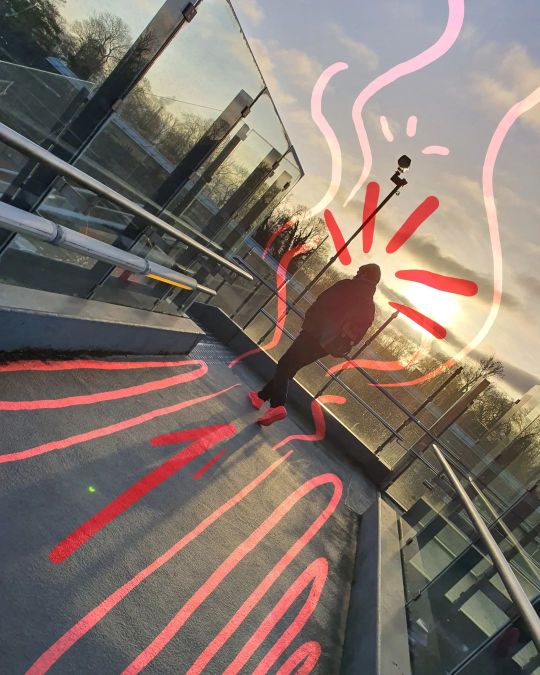
at Østerport station https://www.instagram.com/p/CoLaJwPtpss/?igshid=NGJjMDIxMWI=
0 notes
Text
(Noget af) det anstrengende ved at bo i København er alle de løb, der hele tiden foregår
Marathons, halvmarathons og nu også Tour De France. Altså... Jeg kan jo ikke komme hverken ind eller ud. Jeg skal tilfældigvis aflevere kaninerne på sommerferie hos en veninde lige den søndag, og jeg aner simpelthen ikke, hvordan jeg skal bære mig ad, når man basically ikke kan komme ind nogen steder i bil. Måske ved Hovedbanegården? Iih... Jeg ved godt, det er fedt, at vi har enkeltstart i København og have løbet marathon i indre by. Det forstår jeg godt. Men hvor ville jeg dog ønske, de der arrangementer udleverede et kort, hvor det markeres, hvor man kan slippe igennem ruten. For globs sake. Det er altså lidt af en stressfaktor. Og tidsrøver til tider også.
Heldigvis er der altid tunnelen ved Østerport. Men der kan jo ikke komme en bil igennem. Sørens.
0 notes
Photo
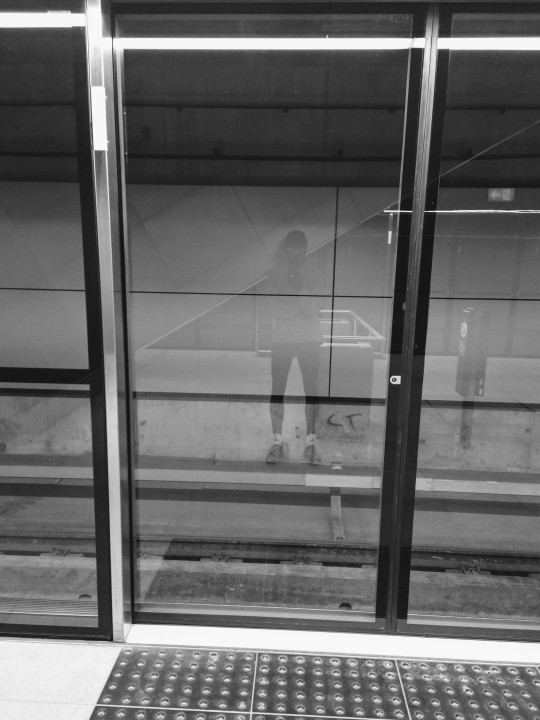
023 - Metro boomin’
Østerport Station, Copenhagen
4 notes
·
View notes
Text
Mangler du en ny frisør, prøv mig. Prøv Krutklip.
https://www.krutklip.dk

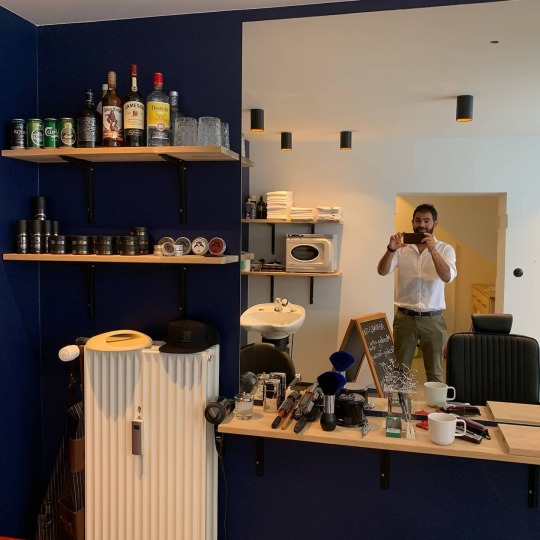

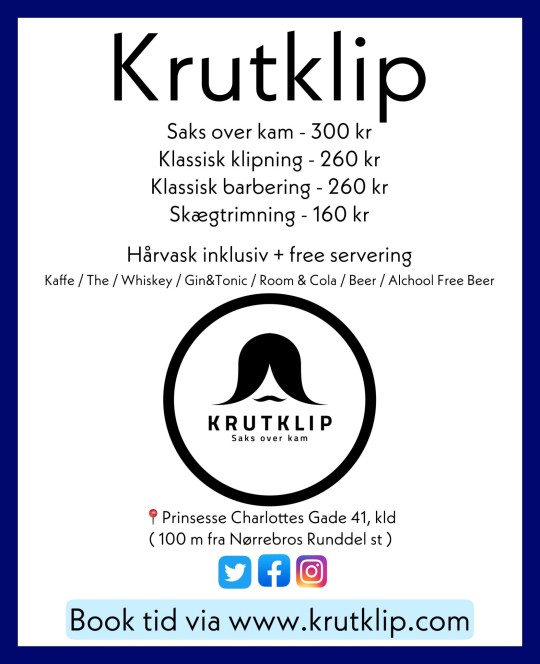
#københavn#danmark#nyhavn#valby#christianshavn#islandsbrygge#Hovedbanegården#Vestergade#Vesterbro#Amagerstrand#Frederiksberg#Brøndby#Vestamager#Lungby#Gentofte#Hellerup#Østergade#Østerport#Nørreport#Vesterport#Carlsberg#Carlsberg byen#Carlsber city#Tivoli#Fakta#Irma#Metro i byen#sas#Dsbtog
0 notes
Photo

♥️ #denmark #copenhagen #københavn #østerbro #østerport #metro #metroenkbh #dansk (Østerbro København) https://www.instagram.com/p/B5GbyIQA-uZ/?igshid=uoekluiuuyz9
0 notes
Photo

#østerport #østerbro #kopenhagen #bahnhof #fernweh #anywherebuthere #wolken #horizont #winter #winter2022 (hier: Østerbro) https://www.instagram.com/p/ClWaeuot9Kk/?igshid=NGJjMDIxMWI=
0 notes
Photo

Thanks to everyone for coming to our concert and enjoying beautiful music for classical guitar, full house!!🙌👍👌🎶🎼 . . . . #classicalmusic #classicalguitar #classicalmusicians #guitarraclasica #guitarra #guitarristas #frihavnskirken #østerport #københavn #denmark🇩🇰 #danmark #musik #classicmusician #guitarist_carlos_barragan #guitarraespañola #tangos #agustinbarriosmangore #concierto #concert #guitarkoncert #duoprometeo #guitarist #guitaristsofinstagram #guitarconcert #musicos #music (at Musik i Frihavnskirken) https://www.instagram.com/p/B4ahWUapqjg/?igshid=ojxbofnap2vs
#classicalmusic#classicalguitar#classicalmusicians#guitarraclasica#guitarra#guitarristas#frihavnskirken#østerport#københavn#denmark🇩🇰#danmark#musik#classicmusician#guitarist_carlos_barragan#guitarraespañola#tangos#agustinbarriosmangore#concierto#concert#guitarkoncert#duoprometeo#guitarist#guitaristsofinstagram#guitarconcert#musicos#music
0 notes
Note
Die anderen Kopenhagener Hässlichkeitskandidaten in der Abstimmung waren übrigens BLOX, Industriens Hus, Østerport II und die Königliche Oper.
BLOX: Ein sehr treffender Name
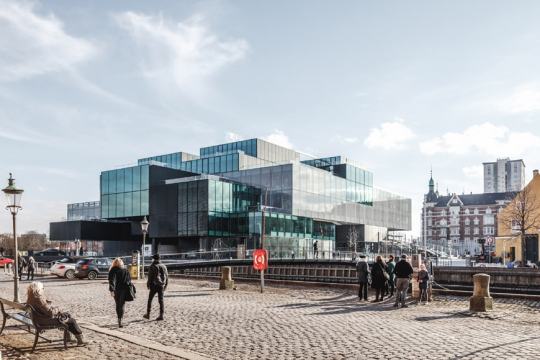
Industriens Hus: Das ist ähm...jede Menge Glas.

So sah übrigens das alte Gebäude aus. Beim Neubau haben sie sich wahrscheinlich gedacht: “Wenn das Gebäude niemand sehen kann, weil überall Glas ist, kann es auch nicht hässlich sein.”

Østerport II wurde sogar zum hässlichsten Gebäude in ganz Dänemark gewählt.
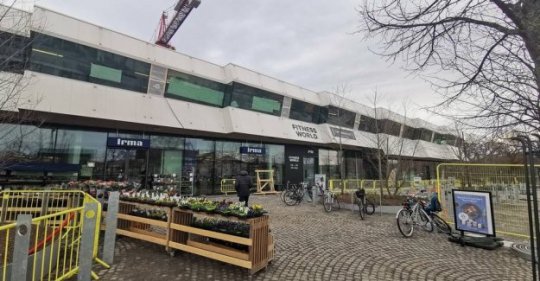

Die Königliche Oper mit einem sehr großen quadratischen Dach und darunter ein unförmiges Etwas.

14 notes
·
View notes
Photo
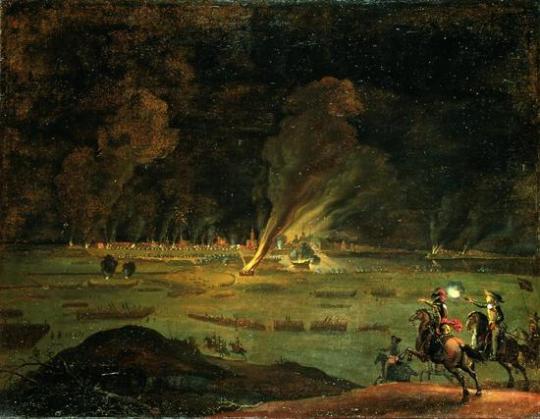
Daniel Vertangen - The assault of Copenhagen on the night between 10 and 11 February 1659 - 1659
The assault on Copenhagen on 11 February 1659 was a major battle during the Second Northern War, taking place during the siege of Copenhagen by the Swedish army.
During the Northern Wars, the Swedish army under Charles X Gustav of Sweden, after invading the Danish mainland of Jutland, swiftly crossed the frozen straits and occupied most of the Danish island of Zealand, with the invasion beginning on February 11, 1658. This forced the Danes to sue for peace. A preliminary treaty, the Treaty of Taastrup, was signed on February 18, 1658 with the final treaty, the Treaty of Roskilde, signed on February 26, 1658, granting Sweden major territorial gains.
The Swedish king, however, was not content with his stunning victory, and at the Privy Council held at Gottorp on July 7, Charles X Gustav resolved to wipe his inconvenient rival from the map of Europe. Without any warning, in defiance of international treaty, he ordered his troops to attack Denmark-Norway a second time.
The Swedish armies had never left Denmark after the peace and already occupied all of Denmark apart from the capital, Copenhagen. After a failed assault, Copenhagen was put under siege in the hope of breaking the defense by starvation. In October 1658 however a Dutch relief fleet under Lieutenant-Admiral Jacob van Wassenaer Obdam defeated the Swedish fleet in the Battle of the Sound and lifted the sea blockade so that supplies and an auxiliary army could reach the capital. The Dutch were an ally of Denmark from the Anglo-Dutch Wars and were afraid that Swedish control of the Baltic would ruin their profitable trade in this area.
The Swedes started the action by making a diversionary attack at Christianshavn and Slotsholmen at the evening on 9 February. They were repulsed, and the Swedes left one of their assault bridges behind, which the Danes captured and measured. They found that the Swedish assault bridges were 36 feet long, and thus they realised that they could render these bridges useless by making the ice free parts of the moats wider than that.
The main assaults were made against Christianshavn and Vestervold, but the chopped-up ice and the massed weaponry on the wall made the densely packed attackers pay a horrific toll in lives. Still, they fought their way to the top of the wall, and fierce hand-to-hand fighting broke out.
When the Swedes realised that the assaults on the Western part of the wall were in trouble, the choice was made to make a supporting attack at Østerport. The Swedes got very close to Nyboder and were in the process of crossing the moat, when they fell victim to a well-conducted ambush, and they withdrew with heavy losses.
At about five in the morning the Swedes gave up and retreated. They had taken severe losses. Before the walls 600 bodies were counted, and many more had perished in the ice-cold water and were never found. On top of that there were many wounded. The Danes had only suffered about 14 dead.
The Dutch in the spring of 1659 sent a second fleet and army under Vice-Admiral De Ruyter to further reinforce the city and cut the Swedish supply lines so that the siege would have to be lifted altogether. After Nyborg had been taken by a Dutch-Danish force, the Danish Isles were abandoned by the Swedes. Negotiations were opened and the Treaty of Copenhagen was signed on May 27, 1660, and it marked the conclusion of the Second Northern War between Sweden and the alliance of Denmark and the Polish-Lithuanian Commonwealth. In conjunction with the Treaty of Roskilde, it ended a generation of warfare and established the present-day borders of Denmark, Norway and Sweden.
Daniel Vertangen (1601, Amsterdam – ca.1683, Amsterdam), was a Dutch Golden Age painter.
24 notes
·
View notes
